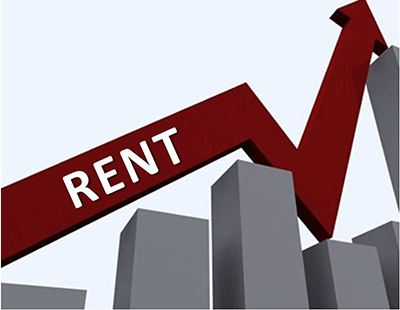
Average asking rents for new tenants outside of London have risen to a new record of £1,162 per calendar month according to Rightmove.
This quarter’s increase of 3.2 per cent is only the third time on record that rents have increased by 3.0 per cent or more in a three months period, as new asking rents continue to rise rapidly.
In London, average asking rents rise to a record of £2,343 pcm this quarter. This puts the annual rate of asking rent growth in the capital at 16.1 per cent, the highest yearly rate of growth of any region on record.
The pace of asking rent growth is primarily down to the severe shortage of available rental properties, combined with extremely high demand which continues to surpass even last year’s levels in every region and country of Great Britain.
Demand is up by 20 per cent compared with last year, while the total number of available properties to rent is down by nine per cent. This widening gap between supply and demand is creating ever fiercer competition between tenants looking for a home.
In London, the number of new properties becoming available to rent is down by 24 per cent on last year, while every other region and country in Great Britain has seen a jump in new properties to rent, most significantly in the South West (up 19 per cent), Yorkshire & The Humber (up 12 per cent) and Wales (up 10 per cent).
Recent mortgage interest rate rises means that even with record rents, the average monthly mortgage payment for a new first-time buyer putting down a 10 per cent deposit is now a fifth more than the rental payment for the equivalent type of property - £1,121 pcm for the mortgage payment compared with £932 pcm to rent.
A knock-on effect of the rise in mortgage interest rates could be that some first-time buyers who can no longer afford the property they wanted, or have decided to wait to try and get a clearer view of the market, may decide to extend their tenancy. This would place added pressure on the demand for flats and smaller properties to rent, at a time when demand for smaller properties to rent is already especially high. Studio flats have overtaken one-beds as the most in-demand type of flat for renters.
Studio flats were typically more in demand in the years leading up to the pandemic, however they were overtaken by one-beds when the market reopened in May 2020 and city living temporarily became less popular.
Competition between tenants for available studios is 71 per cent higher than it was last year and there are now four times as many tenants looking for a studio flat as there are studio flats available.
Agents suggest that stretched budgets and the returning popularity of city centres are contributing to the shift, as more tenants look for the cheapest property available without giving up the city centre location, instead of potentially getting more for their rent further out.
Rightmove’s director of property science Tim Bannister says: “It’s a real challenge for renters at the moment, as there are simply not enough homes available to rent to meet the demand from people enquiring. Whilst it's positive news that most areas are seeing more properties coming to market, with London the notable exception, ultimately the gap between supply and demand is becoming wider across the board. We will need a significant addition of homes to come onto the market to even begin to balance the scales.
“Those looking to rent a smaller property in the next few months may find that they face some added competition from would-be first-time buyers, who have had their purchase plans scuppered for now due to the sudden rise in mortgage interest rates, and are now looking to rent.”















%20-%20IMAGE%20Client%20Accounting%20%E2%80%93%20what%20are%20your%20options.jpg)





Join the conversation
Be the first to comment (please use the comment box below)
Please login to comment